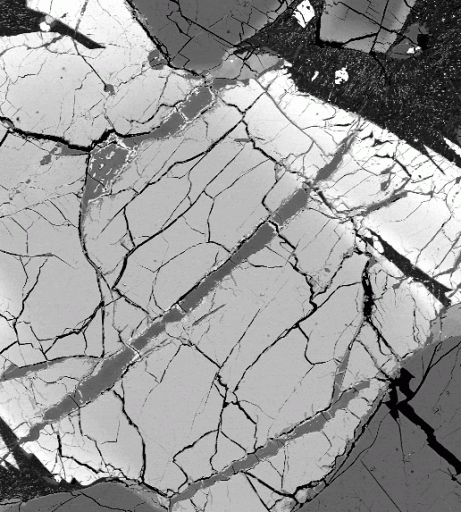[+]

Electron microscope image showing the 700-million-year-old Martian clay veins containing boron (100 µm = one tenth of a millimeter) (credit: UHNAI)
Researchers from the University of Hawaii at Manoa NASA Astrobiology Institute (UHNAI) have discovered high concentrations of boron in a Martian meteorite.
When present in its oxidized form (borate), boron may have played a key role in the formation of RNA, one of the building blocks for life. The work was published on June 6 in open-access PLOS One.
“Borates may have been important for the origin of life on Earth because they can stabilize ribose, a crucial component of RNA. In early life RNA is thought to have been the informational precursor to DNA,” said James Stephenson, a UHNAI postdoctoral fellow.
RNA may have been the first molecule to store information and pass it on to the next generation, a mechanism crucial for evolution.
Although life has now evolved a sophisticated mechanism to synthesize RNA, the first RNA molecules must have been made without such help. One of the most difficult steps in making RNA nonbiologically is the formation of the RNA sugar component, ribose. Previous laboratory tests have shown that without borate the chemicals available on the early Earth fail to build ribose. However, in the presence of borate, ribose is spontaneously produced and stabilized./.../
No comments:
Post a Comment